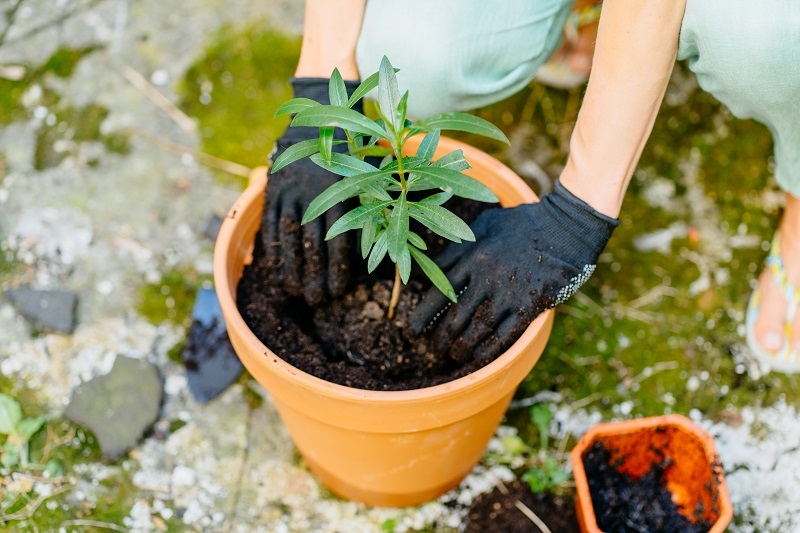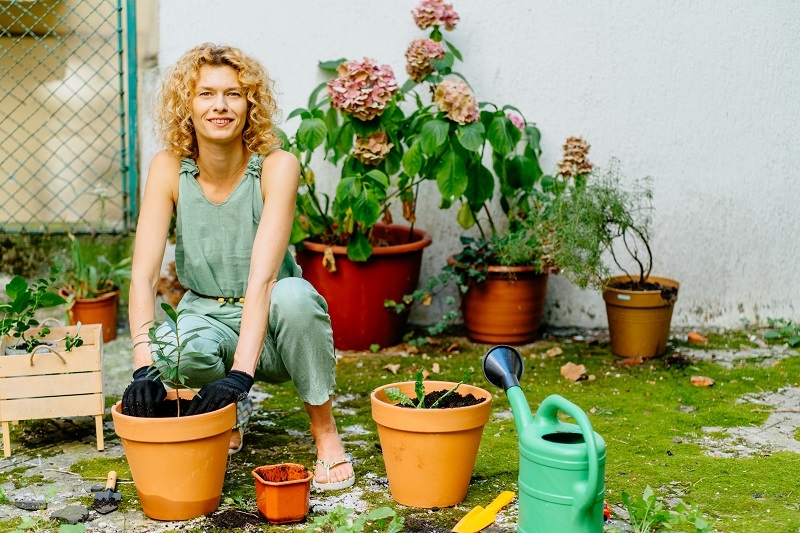
Ask any houseplant lover what the secret is to lush, happy plants, and you’ll hear the same thing again and again: it’s all about the soil. Watering matters, sunlight matters, sure—but the foundation of plant health starts beneath the surface. Choosing the best soil for houseplants can feel overwhelming, though. With so many bags labeled “potting soil,” “potting mix,” or “indoor mix,” how do you know which one is right?
The truth is, different houseplants have different needs. Some love rich, moisture-retentive soil, while others thrive in sandy, quick-draining blends. The good news? You don’t need to be a horticulturist to figure it out. With a little guidance, anyone can create the perfect soil environment for their indoor jungle.
Let’s break down what makes soil “good,” which ingredients to look for, and how you can mix, tweak, and even make your own blends at home.
Houseplants don’t have the luxury of sprawling roots that outdoor plants enjoy. They’re confined to pots, which means the soil is their entire world. It supplies nutrients, holds water, and gives roots the oxygen they need. Bad soil? It suffocates roots, holds too much water, or dries out in a day.
The right soil keeps everything balanced: moisture, nutrients, and airflow. That balance is what leads to greener leaves, brighter flowers, and fewer pest or disease problems.
So, what makes the best soil for houseplants? Think of it as a recipe. You want three main ingredients: organic matter for nutrition, something to hold water, and something to help with drainage. Peat moss or coco coir retains moisture. Perlite or pumice keeps soil airy. Compost provides nutrients. When those elements work together, you get soil that holds enough water to keep plants hydrated but not so much that roots drown.
It’s also important to remember that “potting soil” and “garden soil” are not the same. Garden soil is too dense for containers—it compacts and suffocates roots indoors. Always choose a blend designed for pots.
Not all plants want the same thing. A fern will sulk in the same mix that a cactus thrives in. That’s where specialized blends come in. For leafy plants like pothos or philodendrons, a rich, moisture-holding mix works well. For orchids, chunky bark blends are better because they mimic the airy conditions orchids get in nature.
If you’re working with succulents or cacti, you’ll need a special potting mix for succulents that drains fast. These plants are desert dwellers, and sitting in soggy soil is the quickest way to kill them. The mix usually contains sand, grit, or perlite to keep things loose.
The takeaway? Know your plant’s natural habitat and try to replicate those conditions in your pot.

Want to keep it simple? Buy a pre-made soil mix for indoor plants at your local garden center. These blends are usually well-balanced for most common houseplants, combining peat, perlite, and compost.
But here’s a little secret—no mix is perfect straight out of the bag. You’ll often want to tweak it. Add extra perlite if you notice water pooling too long. Mix in coco coir if soil dries too quickly. Adjusting blends based on observation is what takes you from beginner to plant pro.
For plant lovers who enjoy tinkering, making a DIY soil mix is both fun and cost-effective. You control exactly what goes into it, which means you can customize for each plant type.
A common formula is:
2 parts coco coir or peat moss (for moisture retention)
1 part perlite or pumice (for drainage)
1 part compost or worm castings (for nutrients)
From there, you can adjust. Add sand for succulents, bark chips for orchids, or even a bit of charcoal to absorb toxins. Experimenting is half the joy, and your plants will often show their appreciation with healthier growth.
If there’s one universal truth in houseplant care, it’s this: poor drainage kills. Too much water suffocates roots, leading to rot. That’s why understanding soil drainage tips is critical. Always use pots with holes. Avoid heavy mixes that clump together. And don’t pack soil down too tightly—roots need air pockets to breathe.
Adding perlite, pumice, or coarse sand helps water move through soil faster. For moisture-loving plants, balance that with organic matter that holds water but still allows excess to escape. Think sponge—not swamp.
Over time, soil loses its structure and nutrients. That’s where repotting with the right soil comes in. Most houseplants benefit from a fresh mix every year or two. Repotting doesn’t always mean going into a bigger pot—sometimes it just means replacing tired soil with a new, nutrient-rich blend.
When repotting, gently loosen old soil from the roots, trim any damaged sections, and place the plant into fresh mix. Water well after repotting so soil settles around the roots. It’s like giving your plant a new home and a fresh start all at once.
It’s easy to slip up when you’re new. Some common pitfalls? Using garden soil indoors (too heavy), forgetting drainage holes, or packing soil too tightly. Another mistake is assuming one bag works for all plants. Remember, succulents hate the moisture that ferns love.
Also, avoid reusing old soil from sick plants—it can harbor pests or diseases. When in doubt, start fresh. Your plants will thank you for it.
Not sure if your soil is doing its job? Your plants will tell you. Yellowing leaves may signal poor drainage. Stunted growth often means the mix is exhausted of nutrients. A musty smell suggests root rot. And if you see water sitting on top long after watering, your soil is too dense.
Don’t wait for plants to suffer. Adjust mixes or repot as soon as you notice these warning signs.
Many gardeners are moving away from peat moss because harvesting it isn’t sustainable. Luckily, coco coir is a great alternative. It is manufactured from coconut husks and works just as well to store water while keeping light. You may also add nutrients to the soil in an eco-friendly manner by using compost and worm castings instead of commercial fertilizers.
The dirt is what makes houseplants grow well. The idea is to find a balance between water, air, and nutrients, whether you purchase pre-made mixes or make your own. Know what each plant likes, look for symptoms of stress, and don't be hesitant to make changes as you go. Gardening indoors is just as much about learning as it is about growing. Try, change, and have fun with it. Your house feels better when your plants are happy.
This content was created by AI